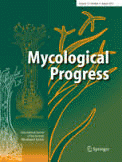Phaeosphaeriaceae is a large and important family in the order Pleosporales which includes economically important plant pathogens. Species may also be endophytes or saprobes on plant hosts especially on monocotyledons (e.g. Cannaceae Cyperaceae Juncaceae Poaceae); some species have also been reported on dicotyledons. The family previously accommodated 35 sexual and asexual genera and comprised more than 300 species with a range of morphological characters. The morphological characters of taxa in this family are often ambiguous and can be confused with other taxa in Leptosphaeriaceae and Montagnulaceae. Fourteen specimens of the type genera of Phaeosphaeriaceae were loaned from herbaria worldwide and were re-examined and illustrated. Fresh collections were obtained from Italy and Thailand characterized examined isolated into pure culture and used to obtain molecular data. The asexual state was induced where possible on sterile bamboo pieces placed on water agar. Multigene phylogenetic analyses of ITS LSU SSU RPB2 and TEF1 sequence datasets were carried out using maximum likelihood maximum parsimony and Bayesian analysis. Molecular analyses shows that 21 genera (Amarenomyces Ampelomyces Chaetosphaeronema Dematiopleospora Entodesmium Loratospora Neosetophoma Neostagonospora Nodulosphaeria Ophiobolus Ophiosphaerella Paraphoma Parastagonospora Phaeosphaeria Phaeosphaeriopsis Sclerostagonospora Setomelanomma Setophoma Vrystaatia Wojnowicia and Xenoseptoria) belong in Phaeosphaeriaceae while seven genera (Amarenographium Bricookea Dothideopsella Eudarluca Phaeostagonospora Scolecosporiella and Tiarospora) are included based on morphological data. Amarenomyces is reinstated and Nodulosphaeria is confirmed in Phaeosphaeriaceae. Eudarluca is distinguished from Sphaerellopsis based on its morphological characters and is typical of Phaeosphaeriaceae. ITS gene phylogenetic analysis indicates that Sphaerellopsis belongs to Leptosphaeriaceae. Ophiobolus species form a clade within Phaeosphaeriaceae while Ophiosphaerella is shown to be polyphyletic. Phaeosphaeria sensu stricto is redefined. Two new species of Phaeosphaeria and one of Phaeosphaeriopsis are introduced while the asexual states of Phaeosphaeria chiangraina and Phaeosphaeriopsis dracaenicola are reported. Scolicosporium minkeviciusii forms a sister clade with Neostagonospora and Parastagonospora in Phaeosphaeriaceae. However Scolicosporium minkeviciusii is not the type species. Thus the placement of Scolicosporium sensu stricto in Phaeosphaeriaceae is questionable. Phylogenetic analysis of combined ITS and LSU genes confirm the placement of Septoriella oudemansii in Phaeosphaeriaceae. However it is not represented by the generic type thus the placement of Septoriella is questionable. Setophaeosphaeria is excluded from Phaeosphariaceae as the type species Sp. hemerocallidis forms a clade at the base of Cucurbitariaceae. Wilmia clusters in Didymosphaeriaceae and is synonymized under Letendraea. Barria Chaetoplea Hadrospora Lautitia Metameris Mixtura and Pleoseptum are excluded from Phaeosphaeriaceae based on their morphological characters. The asexual genera Mycopappus and Xenostigmina are excluded from this family based on the phylogenetic evidence; these genera form a clade close to Melanommataceae.























